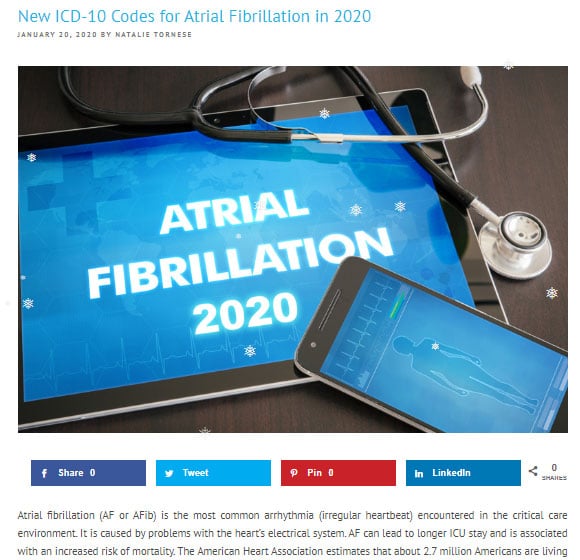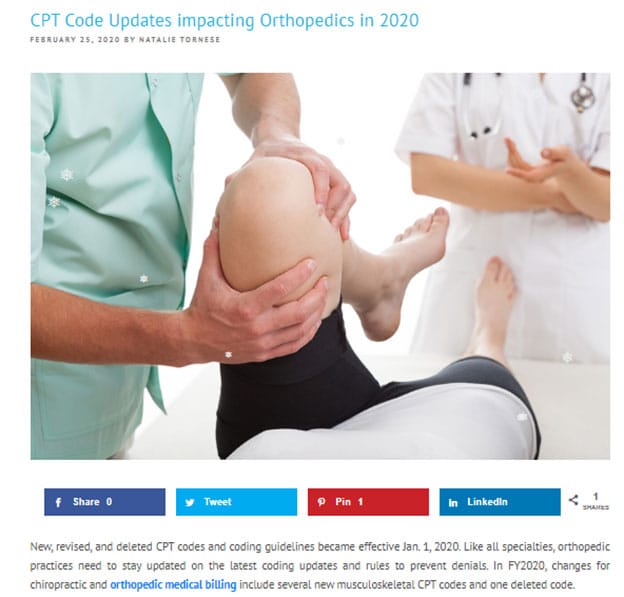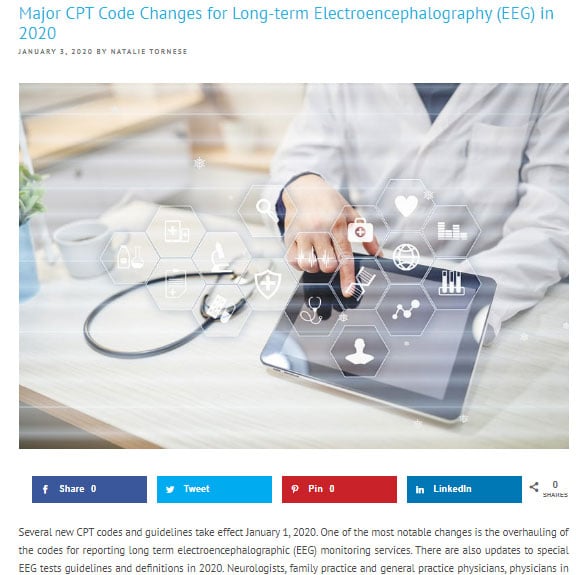The COVID-19 pandemic has altered people’s lives in many ways. This year, we covered almost all COVID-19 related medical billing and coding topics and have seen huge page views for related blogs. As we are heading to 2021, we are sharing our top 10 most popular and insightful blog posts of 2020.

As remote patient monitoring and telemedicine is being increasingly utilized in US health systems, the American Medical Association has introduced six new e-visit CPT codes, which came into effect from January 1, 2020. Here in this blog, we have discussed those new CPT codes and their application.
- Telemedicine Coding and Billing During the COVID-19 Pandemic

As COVID-19 cases were skyrocketing in the U.S., telemedicine also emerged as an important tool to better care for people who contracted the virus. Digital office visits allowed symptomatic patients to stay at home and communicate with physicians on the status of their health, while protecting healthcare workers and the community at large. Many practices continue to rely on telemedicine. In this blog, we have shared important details on telemedicine coding and billing during the covid-19 pandemic.

As a medical billing company, we keep up to date with billing and coding changes and report on current and emerging healthcare issues. In March 2020, we shared details of a new coronavirus (COVID-19) CPT code and description for testing which came into effect on March 13, 2020. Also, we have updated a CDC-issued revised specimen handling guideline. To know more about this new code and revised guidelines.

To ensure appropriate reimbursement, critical care specialists should know both new and existing codes and their definitions as well as ensure documentation that reflects the professional services that support the codes. In this blog we highlighted the new ICD-10 codes for Atrial Fibrillation that has been expanded from four codes to include more specific options for persistent and chronic atrial fibrillation.

In FY2020, changes for chiropractic and orthopedic medical billing included several new musculoskeletal CPT codes and one deleted code. In this blog we discussed the key musculoskeletal CPT code updates relevant to physical therapists, physicians, and other qualified health care providers (QHPs).

In Calendar Year 2020, otolaryngology practices had to update themselves with important changes to endoscopic sinus billing and coding, which included changes to CPT code descriptors and application of the special rule for multiple endoscopic procedures. Read our blog for details.

Several new CPT codes and guidelines took effect on January 1, 2020 and one of the most notable changes was the overhauling of the codes for reporting long-term electroencephalographic (EEG) monitoring services. In this blog we have focused on these new changes, and the updates to special EEG tests guidelines and definitions in 2020.
- COVID-19: CDC Issues Recommendation to Preserve and Optimize the Supply of PPE

With the Covid-19 pandemic spreading across the nation, concern over shortage of personal protective equipment (PPE) at U.S. hospitals also increased. The Centers of Disease Control and Prevention (CDC) updated interim recommendations on PPE, mainly for healthcare professionals (HCPs) managing the COVID-19 outbreak in April 2020. We have listed these updated recommendations in this blog.

Reporting hernia repair and abdominal reconstruction can be complex. You can read about different hernia types, surgical approaches, coding hernia repair, mesh implantation, and mesh removal, hiatal hernia repair and parastomal hernia repair in this blog.

Practitioners need to stay abreast with urology medical billing guidelines and updates to ensure accurate reporting and timely reimbursement. In 2020, several ICD-10 and CPT code changes came into effect for urology and this blog discusses those.




